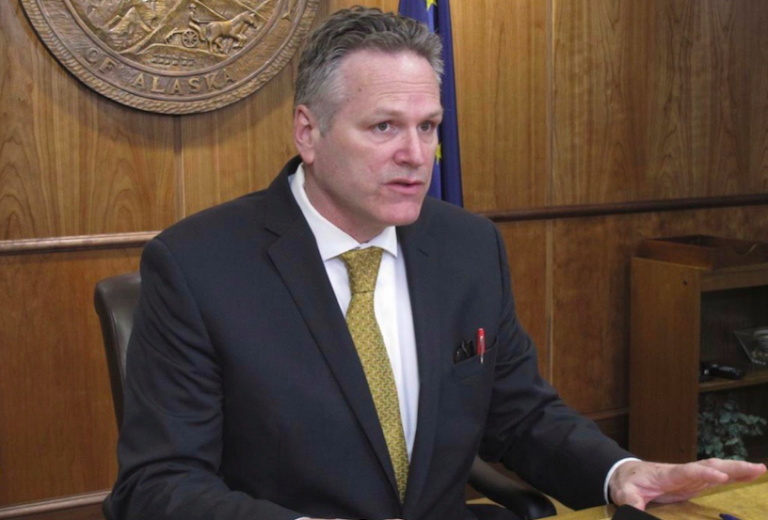DUNLEAVY IS NOW SPORTING RED PEN AT PRESS CONFERENCES
Gov. Michael Dunleavy told the capitol press corps today that his “roadshow” took budget discussions directly to Alaskans and revealed that some agree, and some do not agree with his proposed budget cuts.
But he was overall pleased that Alaskans are having a discussion about the size of the budget and the available revenue to pay for it.
“We want to get rid of this Groundhog Day concept on the budget, that we do the same thing every year, we have the same arguments, we have the same discussions and we get a budget for one year. And then we stumble to the next year,” he said. What Dunleavy wants is to make big cuts now and put constitutional amendments in front of voters to keep the size of government growth in check.
HOUSE BUDGET DEBATED
The House of Representatives had its own operating budget on the floor for debate, and today the Democrat-led majority voted down amendment after amendment offered by the Republican minority, most of them by Rep. David Eastman, the arch conservative of the House.
Speaker Bryce Edgmon said yesterday: “For the body’s knowledge, House Bill 39 will be held in second reading for the purpose of taking amendments tomorrow. And as is tradition, we will entertain all amendments, no matter the length of time involved.”
[Watch Speaker Edgmon say he’ll entertain all amendments]
But today Edgmon had changed his mind and disallowed some of Eastman’s amendments.
The main amendment he disallowed was just one line that said: “It is not the intent of the legislature through any appropriation to create an unfunded mandate.”
Edgmon also disallowed an Eastman amendment that said: “It is the intent of the legislature that membership in a private organization not be a requirement for state employment.” That amendment was a clear shot over the bow of public sector unions, and something Edgmon didn’t want to deal with.
MR. SUBTLE KEEPING RED PEN LOCKED AND LOADED
Dunleavy, meanwhile, spoke to reporters while sporting a red pen in the breast pocket of his suit, a not-so-subtle indication the the intends to make cuts to the budget, if it appears in its current state, which is more than $700 million larger than the one he proposed in February.
He indicated he wasn’t afraid to veto, but said, “I don’t want to speculate too much until the Senate has an opportunity to come up with their budget, and then there’s a conference committee. We believe we still have tools.”
In other notes from today:
- The governor’s Budget Director Donna Arduin said that the House budget has a technical error in it, in that it does not fund education for the Fiscal Year starting July 1.
- During the budget debate on the House floor, the Legislature’s Budget Director David Teal was reported by several people to be holed up with Democrat staffers working on rebuttals to the amendments being offered by the Republican minority. Teal is a nonpartisan employee of the Legislature.
- One of the two amendments that passed was offered by Rep. Sara Rasmussen, which saved the State $33,000.
- On Wednesday, the debate continues the budget, and may debate the defunding of the Alaska Human Rights Commission.
- All of the Permanent Fund Dividend amendments have yet to be debated; that may happen on Wednesday.
- Speaker Bryce Edgmon has delayed a Second Amendment amendment to Wednesday’s floor session.







